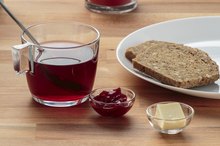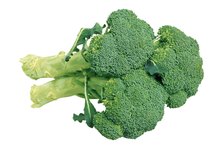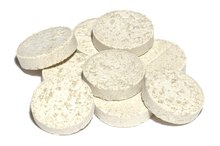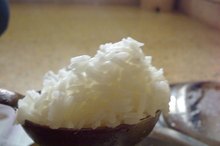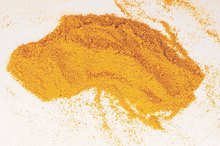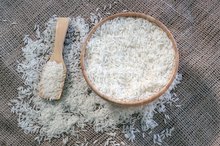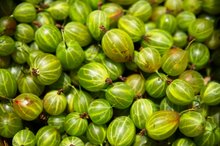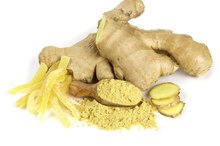What does fact checked mean?
At Healthfully, we strive to deliver objective content that is accurate and up-to-date. Our team periodically reviews articles in order to ensure content quality. The sources cited below consist of evidence from peer-reviewed journals, prominent medical organizations, academic associations, and government data.
The information contained on this site is for informational purposes only, and should not be used as a substitute for the advice of a professional health care provider. Please check with the appropriate physician regarding health questions and concerns. Although we strive to deliver accurate and up-to-date information, no guarantee to that effect is made.
Diarrhea occurs when the food and fluids that you consume pass through the colon too quickly. The liquids are not properly absorbed and evacuate the body via loose, watery stool. In addition, the colon’s lining often becomes inflamed, making it more difficult to absorb fluids. Viruses, bacteria and medications are the most common causes of diarrhea. Although diarrhea typically only lasts for a few days, there are many ways to treat it and shorten its duration.
If you are experiencing serious medical symptoms, seek emergency treatment immediately.
Fluids
During a bout of diarrhea, much of the body’s salt and fluid supply is lost. To keep from getting dehydrated, be sure to drink plenty of clear liquids. The Mayo Clinic suggests broths, water and juices 1. However, do not drink apple or pear juice because they can exacerbate diarrhea symptoms. In addition, refrain from the consumption of caffeine and alcohol. Both are diuretics and can strip the body of fluids.
- During a bout of diarrhea, much of the body’s salt and fluid supply is lost.
- To keep from getting dehydrated, be sure to drink plenty of clear liquids.
Foods
How to Stop Diarrhea with Household Items
Learn More
According to the University of Maryland Medical Center, a diet rich in complex carbohydrates can help remedy diarrhea. Choose from foods like bread, potatoes, rice, dry toast, crackers and bananas. In addition, the active cultures found in yogurt can help ease diarrhea symptoms and shorten its duration.
The Mayo Clinic warns that there are also foods that should be avoided when you are suffering from diarrhea 1. Do not eat fatty foods, dairy products, spicy foods or foods rich in fiber. All can make diarrhea symptoms worse.
- According to the University of Maryland Medical Center, a diet rich in complex carbohydrates can help remedy diarrhea.
- In addition, the active cultures found in yogurt can help ease diarrhea symptoms and shorten its duration.
Herbs
The University of Maryland Medical Center explains that certain herbs can help ease diarrhea. Astringent herbs like blackberry and raspberry leaf can help dry the mucus membranes located in the intestines.
Make a tea with 1 tsp. of an astringent herb and drink 1/2 cup every hour. To reduce inflammation of the intestines, take 250 to 500 mg of quercetin a day. Or simmer a paste out of 1 oz. marshmallow root powder and 1 qt. of water. Drink 1 tsp. of this concoction every hour. For diarrhea caused by an infection, take a 250 to 500 mg supplement of barberry or Oregon grape three times a day. Make sure to consult a doctor before starting any herbal regimen.
- The University of Maryland Medical Center explains that certain herbs can help ease diarrhea.
- For diarrhea caused by an infection, take a 250 to 500 mg supplement of barberry or Oregon grape three times a day.
Related Articles
References
- Mayo Clinic: Diarrhea
- Barr W, Smith A. Acute diarrhea. Am Fam Physician. 2014;89(3):180-9.
- Schiller LR, Pardi DS, Sellin JH. Chronic Diarrhea: Diagnosis and Management. Clin Gastroenterol Hepatol. 2017;15(2):182-193.e3. doi:10.1016/j.cgh.2016.07.028
- National Institute of Diabetes and Digestive and Kidney Diseases. Eating, diet, and nutrition for diarrhea. Updated November, 2016.
- Diarrheal Diseases – Acute and Chronic. American College of Gastroenterology.
- Minocha A, Adamec C. The Encyclopedia of the Digestive System and Digestive Disorders (2nd Ed.) New York:Facts on File. 2011.
- National Institute of Diabetes & Digestive & Kidney Diseases. Diarrhea.
Resources
Writer Bio
Rose Erickson has been a professional writer since 2010. She specializes in fitness, parenting, beauty, health, nutrition and saving money, and writes for several online publications including The Krazy Coupon Lady. She is also a novelist and a mother of three.
